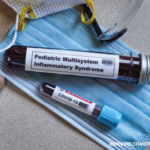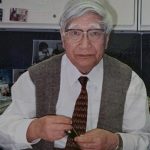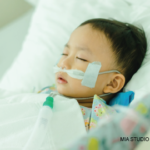NEW YORK (Reuters Health)—Cases of a rare hyperinflammatory syndrome believed to be linked to novel coronavirus continue to be reported around the world.
During a 10-day period in mid-April, clinicians in London treated an “unprecedented” cluster of eight children with hyperinflammatory shock, who presented to Evelina London Children’s Hospital pediatric intensive care unit (ICU), triggering a national alert.
Dr. Shelley Riphagen and her colleagues describe the case cluster in a report in The Lancet.1
Six of the children were of Afro-Caribbean descent and five were boys. All eight children, who were previously “fit and well,” showed features similar to atypical Kawasaki disease, Kawasaki disease shock syndrome or toxic shock syndrome. Four children had known exposure to coronavirus through family.
The clinical presentation in the children was similar, with unrelenting fever (38–40º C), rash, conjunctivitis, peripheral edema, generalized extremity pain and gastrointestinal symptoms.
They all progressed to warm vasoplegic shock refractory to volume resuscitation and eventually needed noradrenaline and milrinone for hemodynamic support. Most of the children had no significant respiratory involvement, but seven required mechanical ventilation for cardiovascular stabilization.
“Other notable features [besides persistent fever and rash] included development of small pleural, pericardial and ascitic effusions, suggestive of a diffuse inflammatory process,” the clinicians report.
All eight children initially tested negative to SARS-CoV-2 on bronchoalveolar lavage or nasopharyngeal aspirates. Laboratory evidence of infection or inflammation included high levels of C-reactive protein, procalcitonin, ferritin, triglycerides and D-dimer. However, no pathological organism was identified in seven of the children. Adenovirus and enterovirus were isolated in one child.
“Baseline electrocardiograms were non-specific; however, a common echocardiographic finding was echo-bright coronary vessels, which progressed to giant coronary aneurysm” in one child within one week of discharge from intensive care. “One child developed an arrhythmia with refractory shock, requiring extracorporeal life support, and died from a large cerebrovascular infarct. The myocardial involvement in this syndrome is evidenced by very elevated cardiac enzymes during the course of illness.”
All eight children were treated with intravenous immunoglobulin (2 g/kg) in the first 24 hours as well as ceftriaxone and clindamycin. Six children were subsequently given aspirin (50 mg/kg). All of the children were discharged from the ICU after four to six days.
After discharge, two children tested positive for SARS-CoV-2, including the child who died, in whom SARS-CoV-2 was detected post mortem.
“We suggest that this clinical picture represents a new phenomenon affecting previously asymptomatic children with SARS-CoV-2 infection manifesting as a hyperinflammatory syndrome with multiorgan involvement similar to Kawasaki disease shock syndrome,” Dr. Riphagen and colleagues write. “The multifaceted nature of the disease course underlines the need for multispecialty input (intensive care, cardiology, infectious diseases, immunology, and rheumatology).”
The clinicians note that one week after submitting their correspondence to The Lancet, their ICU has managed more than 20 children with a similar clinical presentation, the first 10 tested positive for SARS-CoV-2 antibody, including the eight described in their Lancet correspondence.
Reference
- Riphagen S, Gomez X, Gonzalez-Martinez C, et al. Hyperinflammatory shock in children during COVID-19 pandemic. Lancet. 2020 May 7. pii: S0140-6736(20)31094-1. [Epub ahead of print]


